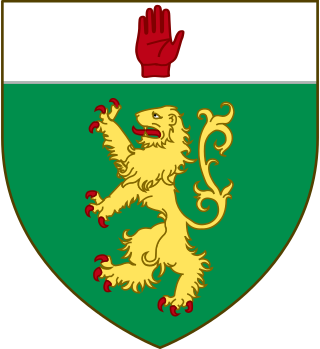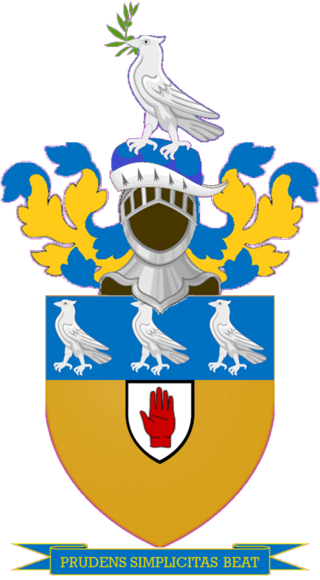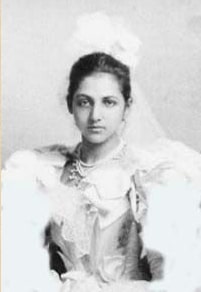
Earl of Albemarle is a title created several times from Norman times onwards. The word Albemarle is derived from the Latinised form of the French county of Aumale in Normandy, other forms being Aubemarle and Aumerle. It is described in the patent of nobility granted in 1697 by William III to Arnold Joost van Keppel as "a town and territory in the Dukedom of Normandy."

Farmleigh is the official Irish state guest house. It was formerly one of the Dublin residences of the Guinness family. It is situated on an elevated position above the River Liffey to the north-west of the Phoenix Park, in Castleknock. The estate of 78 acres (32 ha) consists of extensive private gardens with stands of mature cypress, pine and oak trees, a boating pond, walled garden, sunken garden, out offices and a herd of rare native Kerry cattle. It was purchased by the Government of Ireland from the 4th Earl of Iveagh in 1999 for €29.2 million. A state body—the Office of Public Works (OPW)—spent in the region of €23 million restoring the house, gardens and curvilinear glasshouses, bringing the total cost to the state to €52.2 million. Farmleigh was opened to the public in July 2001.

Earl of Iveagh is a title in the Peerage of the United Kingdom, created in 1919 for the businessman and philanthropist Edward Guinness, 1st Viscount Iveagh. He was the third son of Sir Benjamin Guinness, 1st Baronet, of Ashford, and the great-grandson of Arthur Guinness, the founder of the Guinness brewery.

Maharaja Sir Duleep Singh, GCSI, or Sir Dalip Singh, and later in life nicknamed the "Black Prince of Perthshire", was the last Maharaja of the Sikh Empire. He was Maharaja Ranjit Singh's youngest son, the only child of Maharani Jind Kaur.

Edward Cecil Guinness, 1st Earl of Iveagh, was an Anglo-Irish businessman and philanthropist. A member of the prominent Guinness family, he was the head of the family's eponymous brewing business, making him the richest man in Ireland. A prominent philanthropist, he is best remembered for his provision of affordable housing in London and Dublin through charitable trusts.

Kenwood House is a former stately home in Hampstead, London, on the northern boundary of Hampstead Heath. The house was originally constructed in the 17th century and served as a residence for the Earls of Mansfield during the 18th and 19th centuries.

Rupert Edward Cecil Lee Guinness, 2nd Earl of Iveagh, was an Anglo-Irish businessman, politician, oarsman and philanthropist. Born in London, he was the eldest son of Edward Guinness, 1st Earl of Iveagh. He served as the 20th Chancellor of the University of Dublin from 1927 to 1963, succeeding his father who was Chancellor between 1908 and 1927.
Arthur Francis Benjamin Guinness, 3rd Earl of Iveagh, styled Viscount Elveden between 1945 and 1967, was an Irish businessman and politician. He was chairman of Guinness plc from 1962 to 1986, and then its president from 1986 until his death in 1992.
Arthur Edward Rory Guinness, 4th Earl of Iveagh,, styled Viscount Elveden until 1992, is an Anglo-Irish aristocrat and businessman. Lord Iveagh is a member of the Guinness family.

The Guinness family is an extensive Irish family known for its accomplishments in brewing, banking, politics, and religious ministry. The brewing branch is particularly well known among the general public for producing the dry stout Guinness Beer. The founder of the dynasty, Arthur Guinness, is confirmed to have had McCartan origins. Beginning in the late 18th century, they became a prominent part of what is known in Ireland as 'the Ascendancy'.

Magennis, also spelled Maguiness, Maginnis, Magenis, McGinnis, McGinnas, or McGuinness, is an Irish surname, meaning the "son of Angus", which in eastern Ulster was commonly pronounced in Irish as Mac Aonghusa. A prominent branch of the Uíbh Eachach Cobha, the Magennises would become chiefs of the territory of Iveagh, which by the 16th century comprised over half of modern County Down, Northern Ireland. By the end of the 17th century, their territory had been divided up between them, the McCartan chiefs and English prospectors.

Elveden Centre is a three-tower office building located at 717 7th Avenue Southwest in Calgary, Alberta. Designed by Alberta architectural firm Rule Wynn and Rule and built in three phases between 1959 and 1964, it is one of Calgary's best examples of International-style architecture.

The Iveagh Trust is a provider of affordable housing in and around Dublin, Ireland. It was initially a component of the Guinness Trust, founded in 1890 by Edward Cecil Guinness, 1st Earl of Iveagh, great-grandson of the founder of the Guinness Brewery, to help homeless people in Dublin and London. It is not otherwise related to the brewery company.
William Newton was an English politician.

The Frederick Baronetcy, of Burwood House in the County of Surrey, is a title in the Baronetage of Great Britain. It was created on 10 June 1723 for John Frederick of Burwood House in the southern half of Walton-on-Thames which later became Hersham.

Elveden is a village and civil parish in the West Suffolk district of Suffolk in eastern England. In 2005 it had a population of 270. The village is bypassed by the A11 between Cambridge and Norwich, which ran through the centre of the village prior to 2014.

The Iveagh Gardens is a public park located between Clonmel Street and Upper Hatch Street, near the National Concert Hall in Dublin, Ireland. It is a national, as opposed to a municipal park, and designated as a National Historic Property. The gardens are almost completely surrounded by buildings making them less noticeable and a little hard to find, unlike other green spaces in Dublin.

Bamba Müller was the wife of Maharaja Duleep Singh, the last Maharaja of Lahore. Brought up by Christian missionaries, her transformation from illegitimate girl, born to a German father and Abyssinian (Ethiopian) mother, living in a Cairo mission to a Maharani living a life of luxury with the "Black Prince of Perthshire" has been compared to the "Cinderella" story.
Miranda Daphne Jane Guinness, Countess of Iveagh was a Scottish aristocrat who married into the Guinness family.

Princess Catherine Hilda Duleep Singh, was the second daughter of Maharaja Sir Duleep Singh and Maharani Bamba. She was educated in England and in 1894 she was presented at Court. She became a suffragist with her sisters, but did not take part in Emmeline Pankhurst’s Suffragette movement though her sister Sophia did.















